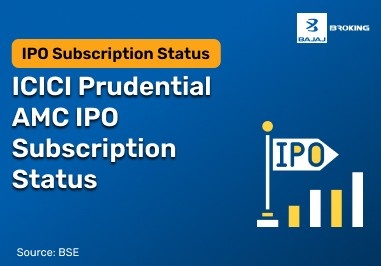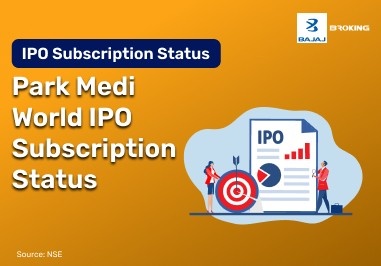Planning for your retirement early can help establish a solid financial foundation. With just ₹11,000 per month, you can invest in SIP, EPF, or NPS to grow your corpus. Each option works differently. EPF offers fixed interest and safety. NPS mixes equity and debt for moderate returns and partial annuity at retirement. SIPs depend on market performance and offer more flexibility. Over 30 years, EPF may yield approximately ₹1.69 crore, NPS around ₹4.71 crore, and SIP between ₹2.5 crore and ₹6.1 crore, based on the return rate (10% to 14%). Use a SIP calculator, EPF estimate, or NPS calculator to check how your money grows. This comparison helps you understand which plan may better suit your long-term retirement goals. There’s no single right option. Your choice should align with your comfort level with risk, your tax needs, and the level of flexibility you desire for your retirement savings.
Corpus from ₹11,000 Monthly in EPF
The Employees’ Provident Fund (EPF) is a government-managed savings plan. It offers stable and fixed returns. If you invest ₹11,000 monthly for 30 years at an average rate of 8.25%, your total retirement corpus may be around ₹1.69 crore. This includes both employee and employer contributions. The key advantage of EPF is that it is low-risk and offers full tax-free maturity after 5 years. The interest is compounded yearly. Although the returns may be lower than those of SIP or NPS, EPF offers safety and is ideal for individuals seeking assured growth. It also gives tax deductions under Section 80C of the Income Tax Act.
You can track the growth through your EPFO account. Since the rate doesn’t change often, it’s easy to plan long-term. If you prefer certainty and are risk-averse, EPF could be a reliable option. Always check the latest EPF interest rate before calculating returns.
Corpus from ₹11,000 Monthly in NPS
The National Pension Scheme (NPS) helps you save for retirement through regular contributions. If you invest ₹11,000 monthly for 30 years, assuming a return of 12.86% annually, your total corpus may reach ₹4.71 crore. NPS invests your money in a mix of equity and debt funds. It is managed by pension fund managers approved by PFRDA. You can claim tax deductions under Sections 80CCD(1) and 80CCD(1B). On retirement, 60% of the amount is tax-free, while 40% must be used to buy an annuity. This provides monthly income after retirement. Returns are not fixed and depend on the market.
The NPS calculator helps you assess possible growth based on your asset allocation. NPS is ideal for long-term investors who seek better growth than EPF but are willing to accept moderate risk. It also comes with low fund management charges, making it cost-effective. It suits people looking for discipline and structured retirement planning.
Corpus from ₹11,000 Monthly in SIP (10% Return)
A Systematic Investment Plan (SIP) is a smart way to invest regularly in mutual funds. If you invest ₹11,000 every month for 30 years with a 10% annual return, your total corpus may be around ₹2.5 crore. You can calculate this using a SIP calculator. SIPs allow you to invest in small amounts while benefiting from compounding and rupee-cost averaging. At 10%, this is a conservative estimate for equity-based funds. SIPs don’t have a fixed interest rate—returns depend on market performance. There is also a long-term capital gains tax, but only on profits above ₹1 lakh per year. SIPs offer full liquidity and no lock-in period unless you opt for tax-saving funds.
Unlike EPF or NPS, SIP gives you control over where to invest and how much to invest. It is suitable for individuals who are comfortable with market risk and seek flexibility. Staying invested over the long term helps mitigate the impact of short-term fluctuations.
Corpus from ₹11,000 Monthly in SIP (12% Return)
If your mutual fund SIP earns a 12% annual return, your ₹11,000 monthly investment can grow to about ₹3.88 crore in 30 years. Use a SIP calculator to check this estimate. SIPs give you the freedom to choose from equity, hybrid, or debt funds based on your risk profile. At 12%, this is a realistic average return from well-performing equity funds over long periods. You can pause, increase, or stop SIPs at any time. The returns are not guaranteed and depend on the fund’s performance.
Tax is applicable on long-term capital gains exceeding ₹1 lakh per year. Unlike NPS and EPF, you can withdraw money from SIPs at any time. This makes it suitable for those who want flexibility and a higher return possibility. SIPs also help build discipline by investing a fixed amount every month. If you stay consistent and have a long-term perspective, SIPs can deliver significant wealth and help build your retirement corpus more quickly.
Corpus from ₹11,000 Monthly in SIP (14% Return)
If your SIP earns a 14% annual return, investing ₹11,000 monthly for 30 years can grow your retirement corpus to nearly ₹6.11 crore. This is a high-growth scenario that assumes good equity fund performance. A SIP calculator helps you check how quickly your money can grow at this rate. SIPs work ideally over long durations, especially when returns are reinvested and withdrawals are avoided. This 14% return assumes you stay invested through market highs and lows.
Although not guaranteed, some funds have historically delivered returns of this nature. There will be long-term capital gains tax on profits above ₹1 lakh per year. SIPs are flexible and can be changed or stopped at any time. They are ideal for individuals who understand market risk and seek higher returns. At this return, SIP outperforms both EPF and NPS. However, one must remain committed and invested for the full term to truly enjoy the benefits of compounding.
Conclusion
Comparing SIP, EPF, and NPS calculators helps investors choose the right path based on return expectations, risk appetite, and tax preferences.EPF is stable and fully tax-free. NPS is semi-flexible with a partial annuity. SIP offers full control and anticipates higher returns, but it involves market risk. There is no single winner—your choice should reflect your financial goals and comfort level. Using a SIP calculator, NPS calculator, or EPF tool can help you plan better. Some investors even combine these options to strike a balance between safety and growth. Always review your investments regularly and adjust as your needs change. The earlier you start, the more your corpus can grow through compounding.














